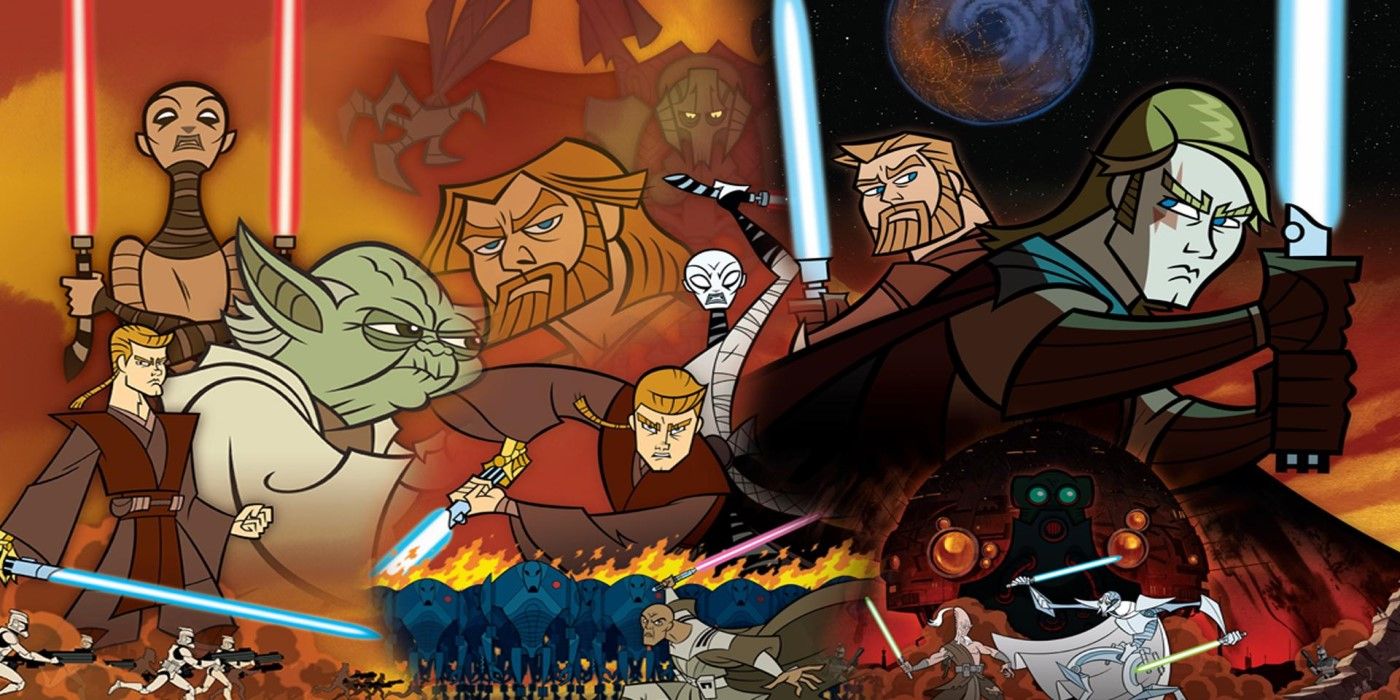Star Wars is a franchise that perpetually engages in self-reflection. Whether it’s questioning its core tenets or offering insights into the origins of its story elements, the saga invites us to explore its fascinating layers. While this introspection can sometimes lead to odd results, it ultimately culminates in a narrative that remains compelling, despite the occasional misstep.
Take Revenge of the Sith as an example. This final installment of the prequel trilogy is currently celebrating its 20th anniversary with a theatrical re-release. Set during the tumultuous Clone Wars, which began in its predecessor, Attack of the Clones, its impact is heightened by the two iterations of Star Wars: The Clone Wars. The original animated series, crafted by Genndy Tartakovsky, made its debut on Cartoon Network, consisting of engaging five-minute shorts that evolved into longer episodes over time.
Much like Samurai Jack, Tartakovsky’s Clone Wars showcased highly skilled characters navigating epic battles, often sans dialogue. This artistic choice made the thrilling fight sequences all the more compelling. Fans of the prequels often critiqued the excessiveness of the Jedi’s choreographed fights, yet Tartakovsky embraced this aesthetic, leading to spectacular animated confrontations that contributed to character developments, such as General Grievous’s fearsome reputation.

Fast forward five years, and the CGI Clone Wars series arrived, packed with 22-minute episodes under the guidance of George Lucas and supervising director Dave Filoni. This reboot delved deeper into the Star Wars universe, exploring the narratives leading up to the dramatic events of Revenge of the Sith.
With a total of 100 episodes, the series ventured into diverse arcs, from confrontations with ruthless Jedi to love stories between returning characters like Obi-Wan and Satine. This character development, particularly for Anakin and his Padawan Ahsoka Tano, solidified the show as an essential part of Star Wars lore. At its time of release, it was the primary source of Star Wars content, contributing to its high regard among fans.
The shadow of Revenge of the Sith looms large over both versions of the Clone Wars. The 2008 series uniquely positioned itself amidst the events of the film, enriching the story by addressing emotional connections lost in the movie’s montage of betrayal. The tragedy of Palpatine’s orders reaching Rex and Ahsoka brought a depth to the narrative that’s hard to overlook.
Much of the Star Wars universe owes its evolution to the groundwork laid by Revenge of the Sith and its animated companions. In the years since the second Clone Wars concluded, interconnected storytelling has been a staple of the franchise, as seen in projects like Andor and Filoni’s expansive Mandalorian saga. Do these new projects resonate with audiences? For many, Andor enriches Rogue One, though the blending of sequel trilogy explanations into Filoni’s shows sometimes feels jarring.
Ultimately, there’s no present-day Star Wars without Revenge of the Sith, and the film itself remains unthinkable without both iterations of The Clone Wars. While it stands as the strongest of the prequel films, the animated series provide depth to its less successful aspects, delivering military sci-fi action that resonates with fans. What’s particularly poignant is that creators like Tartakovsky, Lucas, and Filoni understood the narrative’s inevitable closure for its main characters. Yet, that poignancy seems somewhat lost in today’s Star Wars landscape.
What is the significance of Revenge of the Sith in the Star Wars franchise? Its themes and narrative arcs serve as a foundation for many stories within the universe.
How did the animated Clone Wars series differ from the movie? The animated series leveraged deeper character exploration and story arcs that the film could not fully address.
What role did Genndy Tartakovsky play in shaping the Star Wars animated legacy? Tartakovsky’s creative vision set the stage for future Star Wars animations by exploring stylized action and character development.
What makes the 2008 Clone Wars series essential viewing? It intricately connects characters and plots, enriching the overall saga while providing more nuanced storytelling than its predecessors.
In conclusion, the interplay of Revenge of the Sith with its animated counterparts showcases an evolving narrative landscape in the Star Wars saga. As fans, we are fortunate to witness this rich tapestry of stories. For more insights and the latest updates on all things Star Wars and beyond, continue exploring related content on Moyens I/O.
